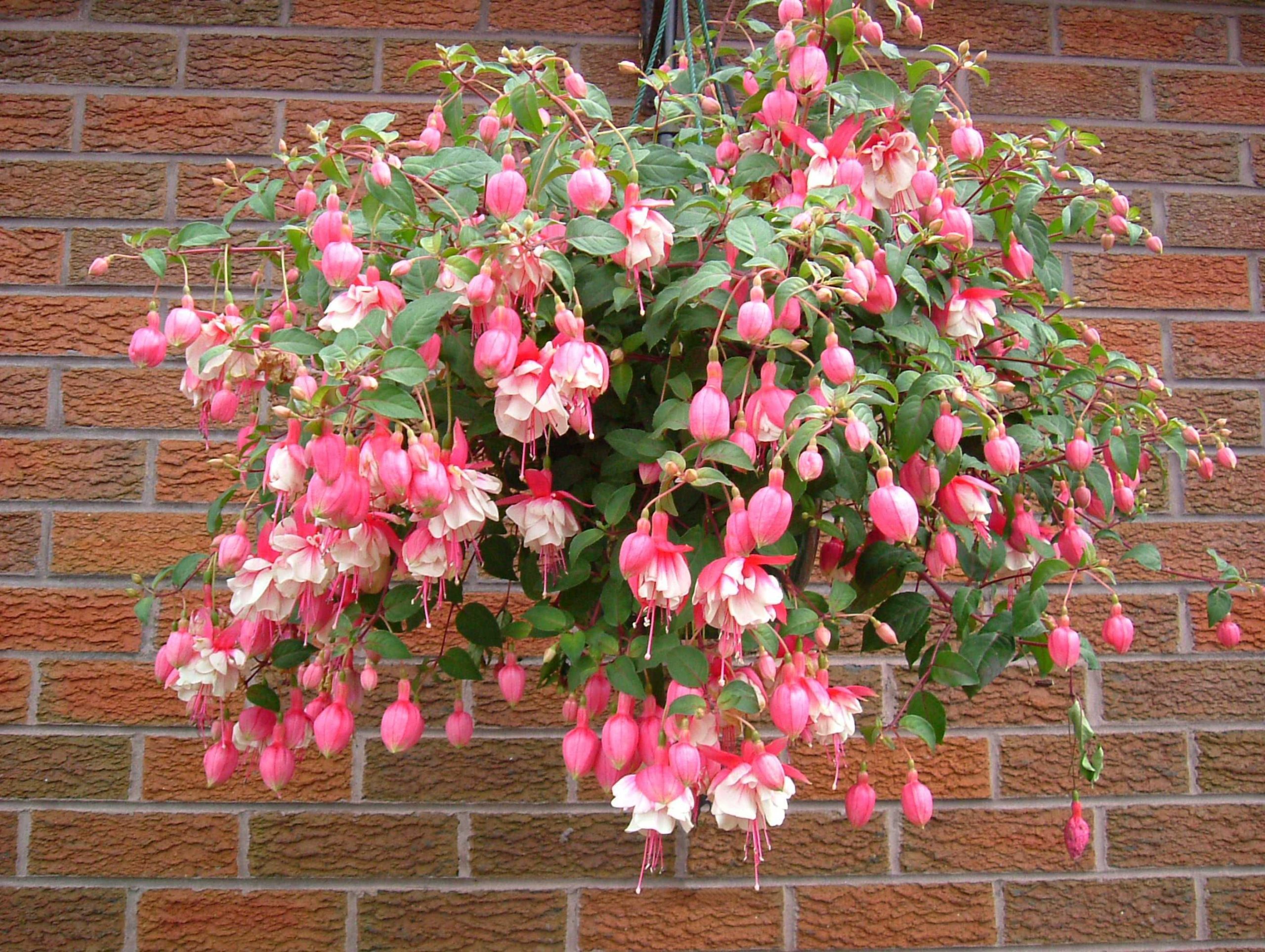Bleeding heart flowers are known for their stunning pink and white blooms that dangle romantically from arching stems. While they are traditionally grown in garden beds these beauties can also thrive in hanging baskets. Follow this complete guide to successfully grow bleeding hearts in hanging baskets.
Bleeding Heart Flower Overview
Bleeding hearts, scientifically named Lamprocapnos spectabilis, are herbaceous perennials native to Siberia, northern China, Korea and Japan. These elegants flowers have been cultivated in gardens for centuries and remain a favorite due to their graceful appearance.
There are two main types of bleeding hearts:
-
Pink bleeding heart – Features pink and white blooms This is the most common and recognizable type Blooms in spring,
-
Yellow bleeding heart – A newer variety with golden yellow and white flowers. Blooms in summer.
Both spread rapidly when planted in garden beds But contained in hanging baskets, they make lovely focal points for porches, patios or garden beds.
Growing Conditions for Bleeding Hearts
Bleeding hearts thrive when provided the following growing conditions:
-
Sunlight – Dappled sunlight or part shade is ideal. Avoid full sun.
-
Soil – Loose, humus-rich soil that drains well. Neutral to slightly acidic pH.
-
Water – Consistent moisture, but avoid soggy soil. Let top few inches dry between waterings.
-
Temperature – Prefer cool conditions. Ideal range is 60-70°F (15-21°C). Don’t allow below freezing.
-
Fertilizer – Apply balanced fertilizer once a month during growth period if needed.
-
Pruning – Remove spent flower stems and any damaged foliage.
Choosing a Hanging Basket
Look for a hanging basket at least 12-14 inches wide and 10-12 inches deep to provide enough room for bleeding heart’s spreading root system. Ideally, choose a basket with multiple drainage holes to prevent soggy soil.
Self-watering hanging baskets are excellent choices as they help maintain consistent soil moisture. Adding a water reservoir helps prevent drying out.
Make sure the hanging basket and hanger can support the weight when the plant is mature and the soil is wet. Wind can also add stress to the hanger.
Planting Bleeding Hearts in a Hanging Basket
Follow these tips for successfully planting bleeding hearts in a hanging basket:
-
Start with one established young plant or divide a mature plant. Bleeding hearts dislike transplanting.
-
Add a quality potting mix designed for hanging baskets. Mix in compost or peat moss to improve drainage.
-
Place the plant slightly off-center in the basket to allow for growth. Plant at the same level it was growing before.
-
Water well after planting and let excess drain fully. Bleeding hearts hate soggy roots.
-
Consider mixing in other shade-loving annuals or perennials with lower water needs, like begonias, impatiens or ferns.
Caring for Bleeding Hearts in Hanging Baskets
Bleeding hearts in hanging baskets need some special care:
-
Check soil moisture frequently. Water when top few inches become dry. Avoid soggy soil.
-
Apply balanced liquid fertilizer every 2-3 weeks during active growth.
-
Monitor for pests like aphids or signs of disease. Treat promptly. Remove spent blooms.
-
Keep an eye on weight when basket is watered. Support heavier baskets with plant caddies.
-
Move basket to a sheltered location or bring indoors if temperatures drop below freezing.
-
Cut back any unsightly growth and clear out dead leaves in late fall after plant goes dormant.
Tips for Success with Bleeding Hearts in Hanging Baskets
Follow these tips to keep your bleeding hearts thriving in hanging baskets:
-
Start with young divisions or plants to avoid transplant shock.
-
Choose a basket with drainage holes and water reservoir to prevent soggy soil.
-
Plant off-center in basket to allow for growth. Plant at same level as before.
-
Water properly, allowing soil to dry out between waterings. Check soil frequently.
-
Give plants part shade exposure. Avoid hot sun which can burn leaves.
-
Apply liquid fertilizer regularly during active growing season.
-
Monitor for pests like aphids. Treat any diseases promptly.
-
Protect from freezing and provide winter dormancy period.
-
Enjoy the graceful cascading blooms!
With the right care, bleeding hearts are incredibly lovely additions to hanging baskets where their flowers can be displayed and enjoyed with ease. Follow these tips and you’ll have success growing these beauties.
5 Best Hanging Basket Plants & Flowers for Shade // Gardening Tips
FAQ
Can you grow bleeding heart in a hanging basket?
Do bleeding heart flowers like full sun or shade?
Do bleeding hearts grow well in pots?
How do you keep bleeding hearts blooming?
How do you care for Bleeding Hearts in a hanging basket?
To care for bleeding heartsin hanging baskets, you need to provide sufficient light, good soil, and water. Here’s a guide to the plant’s needs when grown in a basket. Soil Bleeding hearts need well-aerated soil with plenty of organic matter.
How do you plant a bleeding heart?
Plant a bleeding heart in partial shade and rich, well-draining soil. Plant the bleeding heart’s bare roots so the crown is about 1 to 2 inches below the soil. If it’s planted too deeply, the crown may rot. Protect these delicate flowers from strong winds by placing a bleeding heart in an area with a windbreak and some sun protection.
Can you grow a bleeding heart in a hanging basket?
Yes, you can grow a bleeding heart in a hanging basket as long as they get enough water and fertilizer. Try to place the basket out of wind as not only can this dislodge the basket, but excessive wind will also cause the potting mix to constantly dry out.
Is a bleeding heart a good container plant?
Bleeding hearts are an attractive container plant. They perform well in cool wet spring conditions.

